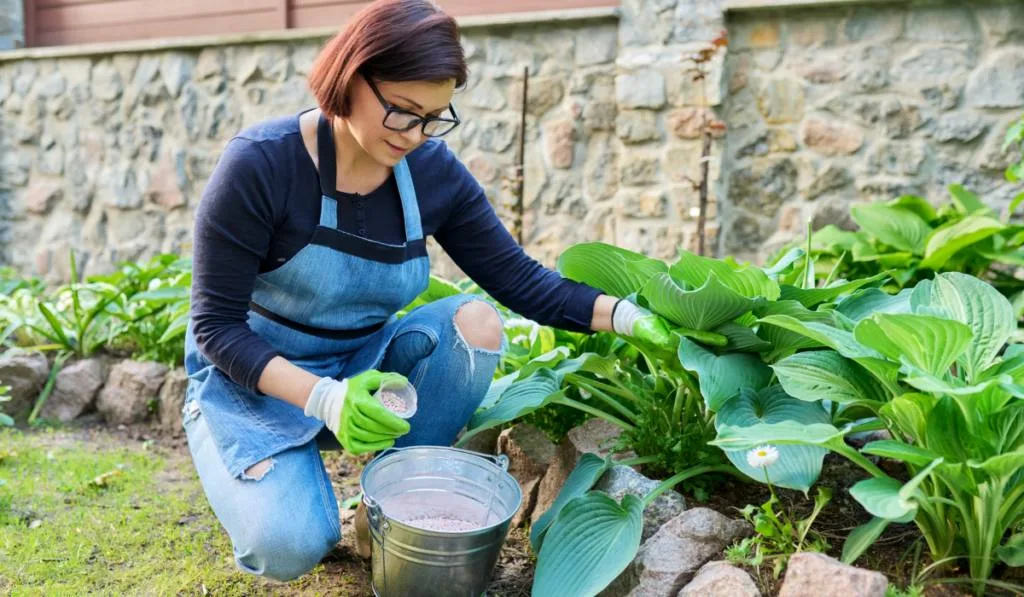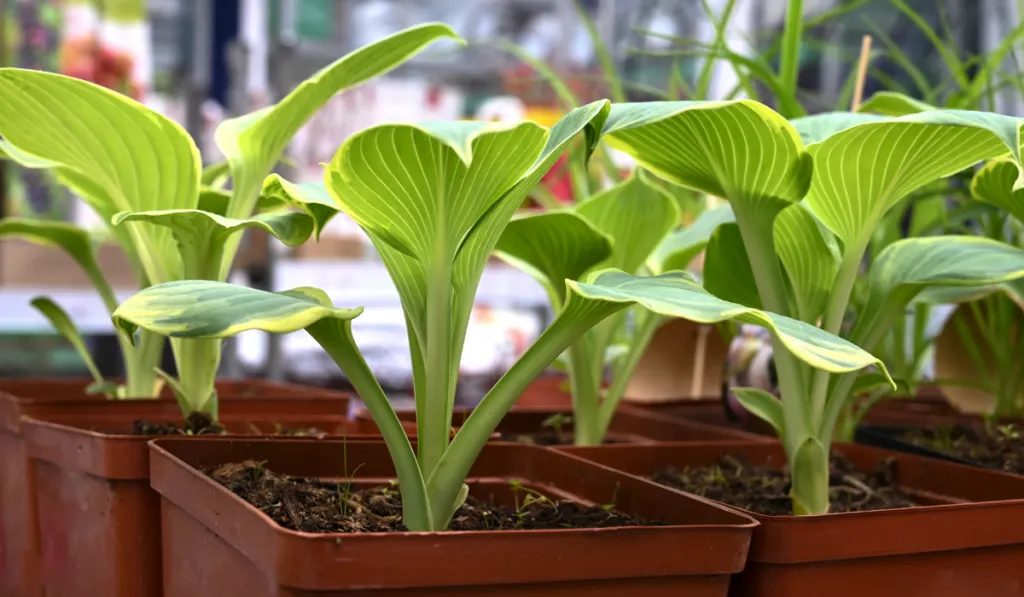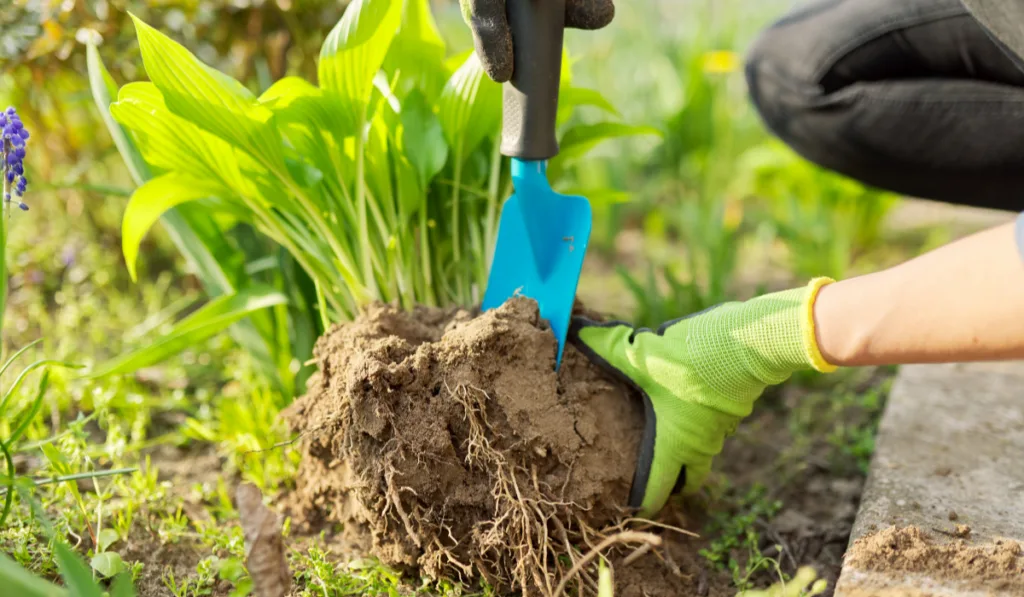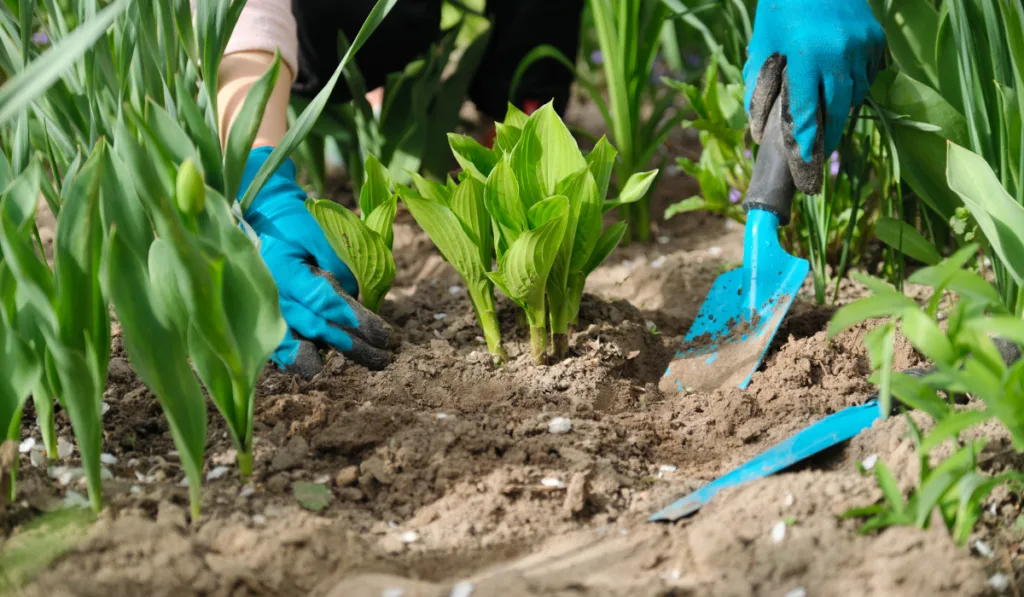Hostas are beautiful plants for your garden, yard, and pots. If you want the magical look of nature around your home, hostas are great plants to grow.
Like other plants, hostas have various requirements, such as light and nutrients. How do you enrich your hostas so that they can grow as healthy plants? Here are five tips for fertilizing your hostas.

Table of Contents
1. Fertilize Your Hostas Once Per Year
Note that over fertilizing hostas is bad for the plants, so it makes complete sense if you decide to fertilize your plants once a year.
So long as you do it well, fertilizing your hostas once per year will save you a lot of time and energy while giving your plants just the right amount of nutrients to last them for a year.
To fertilize your hostas on a yearly basis, you will need to use slow-release granular fertilizer.
This type of fertilizer will slowly release nutrients to your plants. So long as you are using the right composition (20-20-20), you have nothing to worry about.
You also need to wait till early spring as that is when hostas start collecting nutrients from the soil each year. Bury the fertilizer balls a few inches (about 6 inches) away from the base of your hostas.
2. Fertilize Your Hostas Once Per Month
If you are not so comfortable with fertilizing your hosta plants just once per year, you can choose to do so monthly.
The good side to fertilizing your hostas monthly is that you only need to do so in their active growing period (i.e., the summer and spring months). You do not need to fertilize them during the months of winter and autumn.
If you choose to fertilize your hostas monthly, you can use a normal granular fertilizer (i.e., not slow-release) or liquid fertilizer.
Do not over-fertilize your hostas, and if you see signs of too many nutrients in the plant, you should wash the plant’s soil with clean water. You can tell if you are over-fertilizing your hostas when the leaves begin to curl and turn brown.

3. Fertilize Your Hostas Daily or Weekly
Some people choose to be more active in caring for their plants. Well, you should note that hostas do not need you to actively feed them, as they prefer water to fertilizer.
But if you want to fertilize hostas regularly (i.e., daily or weekly), you still can. All you need is a different approach to fertilizing the plant.
You should buy a liquid or water-soluble fertilizer for this. The best type of fertilizer to regularly feed hostas is water-soluble organic fertilizer.
You should mix one-part fertilizer with nine-parts water and use this solution to water your hostas regularly (whenever you’d normally water them).
4. Use Foliar Fertilizer for Your Hostas
One cool way to feed ornamental plants is to use foliar fertilizer.
Foliar fertilizer is a liquid fertilizer with nutrients that are readily available to your plants. All you need to do is to spray the solution on the leaves of your hostas and your plants are good to go.
Fertilizing your hostas with foliar fertilizer helps to prevent your hands from getting messy while enriching your plants with just the right amount of nutrients.
You can only use foliar fertilizer for plants regularly (i.e., weekly or daily). If you notice any form of nutrient deficiency in your plants, you can quickly treat the plants with your foliar fertilizer.
The con of foliar fertilizer is that quality brands are expensive, so you have to spend more.
5. Grow Your Hostas Without Fertilizing Them
How possible is this?
Well, it is not possible for plants to grow without nutrients. It is, however, possible for plants to grow without fertilizing them, as fertilizers are not the only source of nutrients for plants.
Hostas are plants popular for their low nutrient needs. All you need is nutrient-rich soil to grow hostas.
A lot of farmers and gardeners waste money buying unnecessary amounts of fertilizers for their plants when all they need to do is to enrich or amend the soil.
You can amend your hostas’ soil yearly with compost, rotted manure, and other soil amendment products (for nutrition). A proper soil amendment will help your plants to grow without extra nutrients.
Remember to amend your soil at least annually. You can also do it up to two or three times a year.
Now you know different ways to fertilize your hostas. What are other care requirements of hostas? Continue reading.

Hosta Care Requirements
Caring for hostas is easy, so long as you grow them in the right conditions and provide everything that the plants need. Note that you can only grow hostas easily when you are living in USDA hardiness zones 3 through 8.
If you live in zones 3-8, follow the tips below:
- Light: Every plant needs light to grow because it cannot get energy without it. In the case of hosta plants, however, you only need to supply the plants with dappled sunlight. Growing your plants under shade, such as from a tree, is okay.
- Soil or potting mix: The soil of your hostas should be compost-rich as well as packed with other organic amendments. Please do not burn your plants by using products that are not well-composted.
- Water: Try to consistently water your plants so that the soil is never completely dry.
- Pruning: Hostas can become ugly when you leave dead leaves attached to the plant. Please remove dead leaves as well as control the size of your plant as it grows. Prune your plants twice yearly.
- Pest control: Popular pests of hostas include slugs and deer. You should prevent such pests from reaching your hostas.
Aside from light and water, the most important requirement of every plant is still the nutrient that you feed it. We have discussed tips to fertilize your plants, but continue reading to learn how to make fertilizer by yourself.

DIY Fertilizer for Your Hostas
Here are some cool types of fertilizer or soil amendment products that you can make for your hosta plants.
How to Make Compost for Your Hostas
Compost is a very easy soil amendment product to make for your garden plants. Follow the steps below:
- Gather your greens: “Green” resources refer to fresh objects from which your compost pile can get nitrogen. Some examples are grass clippings, fresh leaves, animal manure, etc.
- Gather your browns: “Brown” resources are objects from which your compost pile can get carbon. Carbon is like fuel or a source of energy for the microbes that decompose the green objects for nitrogen. These objects include dry grass, hay, paper, etc.
- Get your preferred ratio: The preferred ratio to make compost is four-part brown to one-part green. This will ensure that there is enough energy for the aerobic microbes to decompose the green objects throughout the composting period.
- Mix your compost pile: You must mix and turn the pile twice or three times weekly. It will help if you have a tumbling compost bin.
- Monitor the progress: You can tell that your pile is composting when it is warmer than the temperature outside. You can tell that the pile is composting well when it does not emit any foul smells. You can tell that the pile is ready when it looks, feels, and smells earthy.
Now you know how to make compost for your hostas. Continue reading to learn how to make liquid (water-soluble) fertilizer for the plants.

How to Make Liquid Fertilizer for Your Hostas
Water-soluble organic fertilizer is the best type of fertilizer for hostas as well as other types of plants. If you’d love to make it yourself, follow the steps below:
- Collect some animal droppings: You can use the droppings of cows, chickens, ducks, or rabbits to make this fertilizer.
- Collect any extra ingredients that you want: Using animal droppings alone is completely fine, but if you need extra calcium (from bones) or phosphorus (from banana peels), you will need to add other ingredients.
- Mix your ingredients and put them in water: The volume of the animal manure and ingredients should not be more than 10% of the volume of water.
- Switch on your aerator: To ensure a proper decomposition, you need to aerate the solution constantly for three or more weeks.
- Keep the solution far from your home: The initial stage of decomposition may emit a pungent smell that you may not want around your home.
- Use the fertilizer when it is ready: You will notice that the fertilizer has a consistent color and does not have a foul smell anymore. You should not collect the bottom part of the solution because it is not water-soluble. The middle and upper parts of the solution are what you need.
You can mix one-part liquid fertilizer with one- to eight-parts water, according to how concentrated you made it.
It will help if you have a TDS (total dissolved solids) meter and EC (electrical conductivity) meter to monitor the concentration of the fertilizer.
Final Thoughts
Fertilizing hostas is super easy, and you can fertilize your plants with the best method that works for you. Remember not to over-fertilize your hostas so that they do not die. Also, remember to follow all the care tips listed in this article.
Resources
- https://homeguides.sfgate.com/hosta-plants-grow-better-fertilizer-without-66984.html
- https://plantaddicts.com/fertilizing-hostas
- https://raintreegardens.com/how-to-fertilize-hostas/
- https://www.gardeningknowhow.com/ornamental/foliage/hosta/how-to-fertilize-a-hosta-plant.htm
